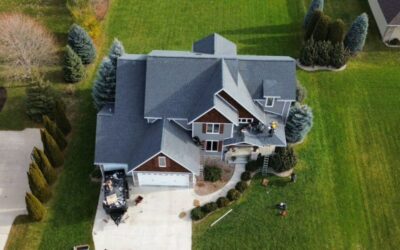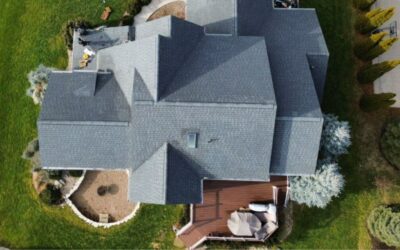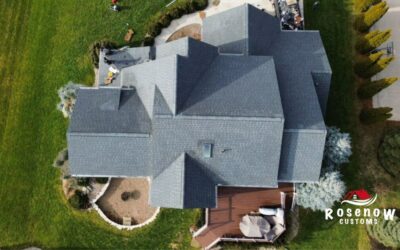Roof damage is often overshadowed by more immediate home repair concerns, yet it holds a critical place in maintaining a home’s integrity and comfort. It establishes its importance through the crucial role it plays in protecting a home from external elements, offering a shield against weather, wear, and tear with unmatched effectiveness. The unique challenge of preventing roof damage sets it apart in the broad spectrum of home maintenance tasks, providing a distinct objective that marks it as an essential aspect of homeownership.
Key strategies for preventing roof damage include regular inspections, proper maintenance, the selection of quality roofing materials, and professional installation, each known for their significant impact on a roof’s longevity. Special mention goes to proactive measures like cleaning gutters and trimming nearby trees, which, while seemingly simple, play a vital role in preventing potential damage. Diving deeper, each preventive measure offers its own set of benefits, techniques for implementation, reasons for importance, and tips for ensuring effectiveness. For residents looking to address such needs, Rosenow Customs offers specialized residential roofing services in Neenah, Wisconsin designed to enhance and protect your home’s roof with precision and care.
The following sections will delve into these strategies in detail, offering a comprehensive understanding of how to protect your roof from damage, thereby preserving the value and safety of your home.
What is roof damage?
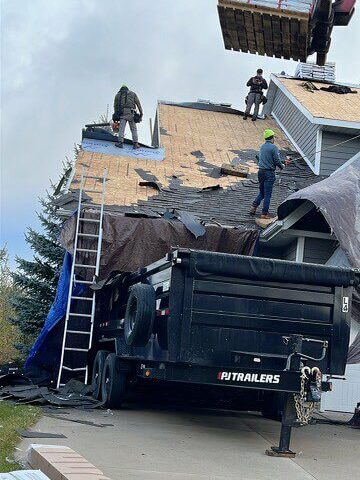
Roof damage involves various issues that can undermine the integrity and functionality of a roof. This includes visible signs such as broken or missing shingles, which often serve as the initial indicators of wear or damage. Moreover, less apparent signs like water stains on ceilings or walls may suggest potential leaks, threatening the structure and interior of the home.
Damage can also appear as missing, cracked, or curled shingles, signaling an urgent need for attention to prevent further deterioration. Recognizing these signs is critical for homeowners to address issues promptly, ensuring the roof remains in optimal condition to keep the home safe and shielded against external elements.
Why is preventing roof damage important?
Preventing roof damage is critical as it protects the home’s structural integrity, ensuring the safety and security of its inhabitants. This proactive approach prevents costly repairs in the future, thereby saving homeowners significant amounts of money. Maintaining the roof in good condition also helps in maintaining the home’s value, making it an attractive proposition for future sales.
Through regular maintenance and proactive measures, the risks of severe damage can be mitigated, underlining the importance of this aspect of home care.
Protects the home’s structural integrity
A roof in prime condition is crucial for protecting the home’s structural integrity. It serves as the first line of defense against environmental elements like rain, wind, and snow, preventing water damage that could weaken the home’s foundation and walls.
Prevents costly repairs
By addressing minor issues promptly, homeowners can avoid costly repairs in the future. Regular inspections and maintenance are key to identifying problems early, saving significant amounts of money on potential extensive repairs.
Maintains home value
A well-maintained roof not only improves a home’s aesthetic appeal but also maintains its value. It signals responsible homeownership to potential buyers, making the property more attractive on the real estate market and often resulting in a better sale price.
How can regular inspections prevent roof damage?
Regular inspections are key to preventing roof damage by identifying potential issues early, a step that is crucial in avoiding extensive and costly repairs later on. These inspections empower homeowners to plan for maintenance or repairs in a timely fashion, ensuring that small problems don’t escalate into larger, more serious issues. Additionally, staying on top of the roof’s condition through regular check-ups aids in budgeting for future expenses, making financial planning more predictable and manageable.
Incorporating inspections into routine home maintenance schedules can significantly extend the lifespan of a roof, maintaining its essential role in protecting the home.
Identifies potential issues early
Regular roof inspections play a crucial role in identifying potential issues early. This early detection allows for minor problems to be addressed before they turn into significant, costly damage, ensuring the roof’s optimal condition and continued protection against environmental elements.
Plans for maintenance or repairs
These inspections enable homeowners to strategically plan for maintenance or repairs. Being able to distinguish between immediate repair needs and those that can be scheduled for later allows for more effective planning, contributing to the roof’s longevity and uninterrupted functionality.
Helps in budgeting for future expenses
Knowing the state of the roof through regular check-ups assists in budgeting for future expenses. Anticipating maintenance and repair costs allows for better financial planning, avoiding the stress of unexpected repair bills and contributing to smoother home upkeep.
What role does proper maintenance play?
Proper maintenance is crucial in extending the lifespan and enhancing the durability of a roof. Key activities include cleaning gutters and downspouts to prevent water overflow, which can lead to potential damage to both the roof and the home’s foundation. Removing debris from the roof not only reduces wear and tear but also prevents the accumulation of materials that could cause damage over time.
Furthermore, trimming trees near the roof is essential to avoid physical damage from falling branches or leaves that can accumulate and retain moisture. Through diligent maintenance practices, homeowners can significantly lower the risk of roof damage, ensuring the roof remains in prime condition to protect the home against various weather conditions and external elements.
Cleaning gutters and downspouts
Cleaning gutters and downspouts is a critical maintenance task that helps in preventing water overflow. This ensures that water is efficiently directed away from both the roof and the home’s foundation, safeguarding against the risk of water damage.
Prevents water overflow and damage
Keeping gutters clear is essential to prevent water overflow and damage. This proactive measure is vital for preserving the roof’s integrity and preventing leaks that could harm the home’s interior and structural integrity.
Removing debris from the roof
Removing debris from the roof is key to reducing wear and tear. Accumulated leaves, branches, and other materials can trap moisture, causing damage over time, making their removal an important part of roof maintenance.
Reduces wear and tear
Clearing debris not only maintains the cleanliness of the roof but also significantly reduces wear and tear. This action helps extend the roof’s lifespan by preventing the degradation of roofing materials.
Trimming trees near the roof
Trimming trees near the roof is crucial to avoid physical damage from branches. Overhanging limbs can cause damage to roofing materials during windy conditions or fall onto the roof, leading to significant harm.
Avoids physical damage from branches
Regular trimming of tree branches helps avoid physical damage to the roof. This preventive maintenance prevents branches from falling onto the roof during adverse weather conditions, protecting it from potential damage.
How does quality roofing material help?
Selecting quality roofing material is crucial for a roof’s longevity and durability. High-quality materials are designed to have a longer lifespan, greatly minimizing the need for frequent repairs or replacements. Furthermore, these materials excel in providing resistance to various weather conditions, such as extreme temperatures, heavy rainfall, and strong winds, which is essential for preserving the roof’s integrity over time.
This aspect becomes particularly significant in regions subjected to harsh climates, where the choice of roofing material can substantially influence the roof’s performance and the overall protection of the home. By investing in quality roofing materials from the start, homeowners can achieve long-term savings and ensure their roof remains strong and resilient.
Offers longer lifespan
Choosing quality roofing materials significantly extends the roof’s lifespan. These materials are designed for durability, requiring fewer replacements over time and offering homeowners both peace of mind and significant cost savings in the long run.
Provides better resistance to weather
High-quality roofing materials excel in providing resistance to adverse weather conditions. Whether it’s battling high winds, repelling heavy rainfall, or enduring intense sun exposure, these materials ensure the home remains protected, enhancing the roof’s overall durability.
Especially important in harsh climates
In regions with harsh climates, the importance of selecting the right roofing material cannot be overstated. Quality options are capable of withstanding extreme weather events, from blistering heat to icy blizzards, safeguarding the home against the elements and minimizing weather-related damage.
Why is professional installation crucial?
Professional installation is critical in ensuring that roofing materials achieve their maximum potential. It ensures correct installation techniques are employed, which is essential for the roof’s longevity and its role in protecting the home. Professionals bring the knowledge necessary to guarantee the use of appropriate materials tailored to specific roof types and local weather conditions, boosting the roof’s resilience.
Moreover, expert installation minimizes the risk of future issues, such as leaks or structural damage, that could stem from incorrect installation practices. Ultimately, professional installation not only safeguards the immediate integrity of the roof but also secures its long-term performance and the overall safety of the home.
Ensures correct installation techniques
Professional roofers bring the necessary expertise to ensure correct installation techniques are meticulously followed. This expertise is crucial for the roof’s ability to provide optimal protection against environmental challenges, thereby extending its service life.
Guarantees use of appropriate materials
Leveraging their comprehensive knowledge, professionals guarantee the use of appropriate materials tailored to each specific roofing project. This ensures that the chosen materials are ideally suited to the home’s location and prevailing weather conditions, significantly enhancing the roof’s durability and performance.
Minimizes risk of future issues
By adhering to industry standards and employing proper techniques, expert installation significantly minimizes the risk of future issues, such as leaks or structural damage. This proactive approach lays a solid foundation for a roof that remains secure and functional over the years, offering peace of mind to homeowners.
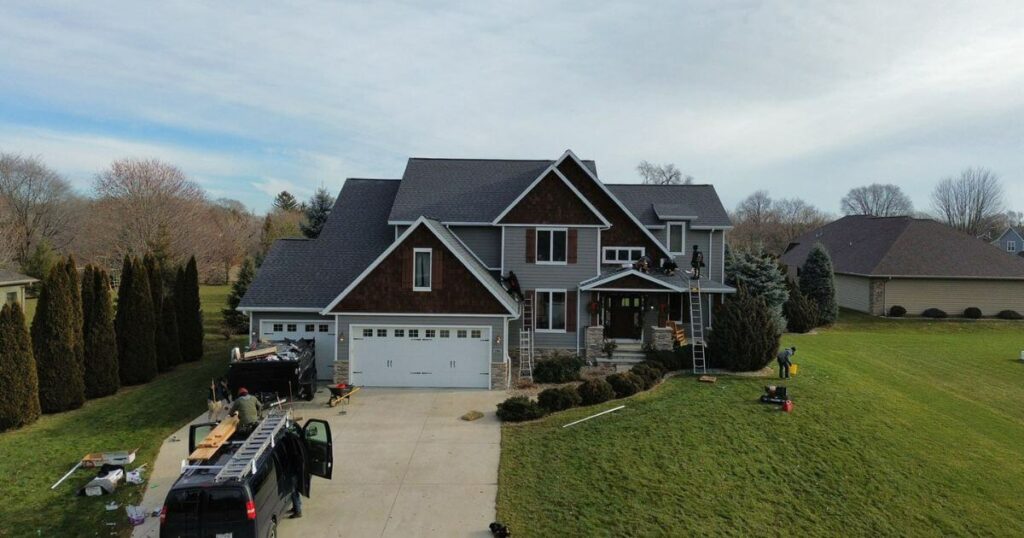
How can homeowners identify signs early?
Homeowners can significantly contribute to their roof’s longevity by identifying early signs of wear or damage. Visible cues such as broken or missing shingles are clear indicators that the roof may require immediate attention. Water stains on ceilings or walls often point to potential leaks, which, if neglected, could lead to more severe complications.
Furthermore, the appearance of missing, cracked, or curled shingles signals areas at risk of water ingress and subsequent damage. Early recognition of these signs empowers homeowners to act swiftly, preventing minor issues from developing into extensive repairs or replacements, thereby safeguarding the roof’s role in protecting their home.
Visible signs of wear or damage
Visible signs of wear or damage are crucial indicators that a roof may be compromised. Regular inspections for such signs are essential for maintaining the roof’s integrity and functionality.
Such as broken or missing shingles
Broken or missing shingles serve as clear evidence that a roof requires repair. These defects can leave the roof vulnerable to water infiltration, leading to further damage.
Water stains on ceilings or walls
Water stains on ceilings or walls are often telltale signs of potential leaks from the roof. Early detection and repair of these leaks are vital to prevent extensive damage to the home.
Indicates potential leaks
The appearance of water stains strongly indicates potential leaks, which, if neglected, can cause significant structural damage and encourage mold growth within the home.
Missing, cracked, or curled shingles
Missing, cracked, or curled shingles not only affect the roof’s appearance but also signal the need for immediate attention. Addressing these issues promptly can safeguard the roof’s ability to protect the home against environmental elements.
Signals the need for immediate attention
The presence of damaged or absent shingles signals the need for immediate attention to prevent water damage and extend the roof’s overall lifespan.
What steps to take if damage is suspected?
When homeowners suspect roof damage, the initial step is to contact a professional for an inspection. An expert evaluation is crucial for accurately assessing the damage, helping to distinguish between areas that require immediate repair and those that can be monitored. This assessment is instrumental in aiding homeowners to decide between repair or replacement, providing insights into the most cost-effective and sustainable solutions.
After the inspection, it’s important to discuss repair or replacement options with the roofing professional, taking into account both immediate and long-term implications and costs. Following these steps ensures that any suspected damage is addressed efficiently, maintaining the roof’s integrity and the safety of the home.
Contact a professional for inspection
The initial step upon suspecting roof damage is to contact a professional for inspection. An expert’s assessment is invaluable, offering a thorough evaluation that identifies all potential and existing issues.
Review the extent of damage
Following the professional inspection, it is crucial to review the extent of damage. This step provides a detailed understanding of the roof’s condition, pinpointing specific areas that need attention and assessing the overall severity of the damage.
Helps in deciding between repair or replacement
Gaining a clear picture of the damage helps in deciding between repair or replacement. This critical choice impacts not only the immediate state of the home but also its future condition and maintenance requirements.
Discuss repair or replacement options
It’s important for homeowners to discuss repair or replacement options with the roofing expert. This conversation should explore the advantages and disadvantages of each route, including considerations of durability, cost, and expected performance.
Consider long-term implications and costs
Lastly, considering long-term implications and costs is essential. Whether opting for repair or a complete replacement, understanding the future maintenance needs, potential savings, and overall investment is key to making a well-informed decision.



